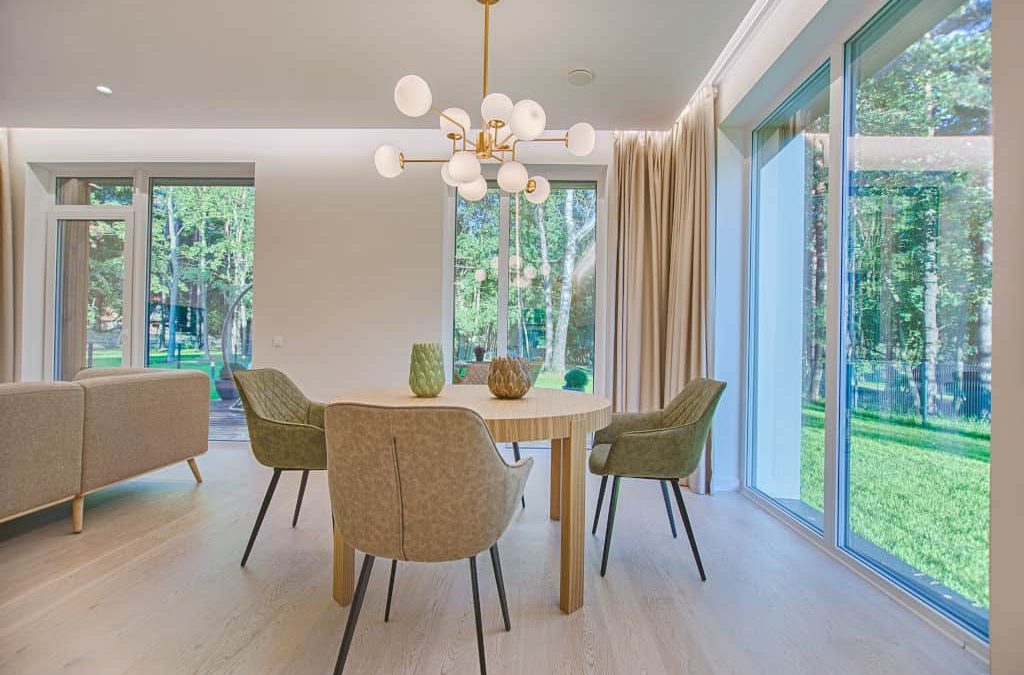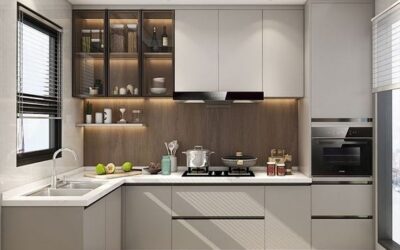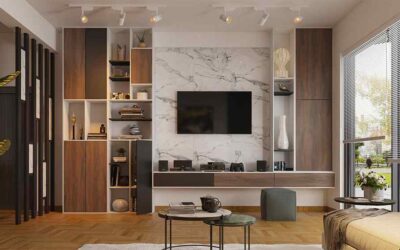“Neutrals” typically refers to colors that are understated, subtle, and not overly saturated. Neutrals often serve as a foundation in various fields, including design, fashion, and art. The term encompasses a range of colors that lack strong chromatic intensity, allowing them to pair well with a wide array of other colors. Neutrals play a crucial role in interior design as they provide a versatile and timeless foundation for creating balanced and aesthetically pleasing spaces. They encompass a wide range of colors that are subtle, versatile, and often serve as a foundation in design. These hues can create a sense of balance, timelessness, and sophistication in various settings.
IMPORTANCE OF NEUTRALS IN INTERIOR DESIGN
The importance of neutrals in interior design lies in their ability to create a balanced, versatile, and timeless foundation for a space. Here are several reasons why neutrals are crucial in interior design:
1.Versatility:
Neutrals, such as whites, grays, and beige tones, are versatile and can easily blend with a variety of colors. This flexibility allows for easy changes in accent colors or accessories without needing a complete overhaul of the design. They provide a versatile backdrop that can accommodate a wide range of design styles and color schemes. They serve as a neutral canvas, allowing for easy incorporation of different furnishings, accessories, etc.
2.Timelessness:
Neutrals have a classic and timeless quality that transcends trends. Using neutral colors as a base allows for a design that remains visually appealing and withstands changing fashions and remains appealing over the years. This is particularly important for long-term investments like furniture or architectural elements.
3.Creating a Calm Atmosphere:
Neutrals are often associated with a sense of calm and tranquility. Using neutral colors in a space can contribute to a serene atmosphere, making it a comfortable and inviting place to live or work. Lighter neutrals, in particular, can make a room feel open and airy, promoting a serene atmosphere.
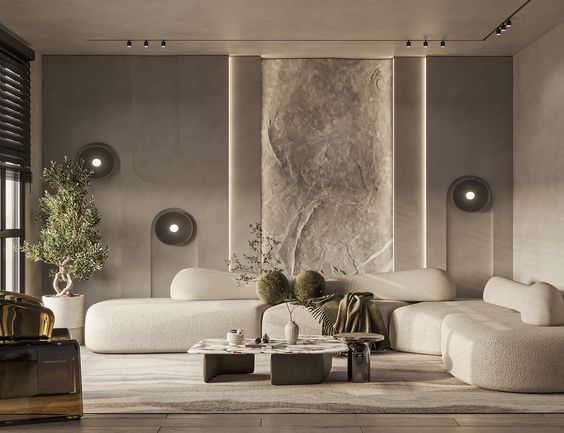
Source: benhance
4.Enhancing Natural Light:
Neutrals can help maximize the impact of natural light in a space. Lighter neutral colors, in particular, can reflect and amplify natural light, making rooms feel brighter and more open. Enhancing natural light in interior spaces holds several important benefits, both aesthetically and functionally.
5.Highlighting Key Elements:
Neutrals provide a neutral backdrop that allows other elements in the room, such as artwork, furniture, or architectural features, to stand out. This can be particularly effective when there are statement pieces or unique design elements that you want to emphasize. They act as a canvas that emphasizes the form, texture, and details of these elements.
6.Balancing Bold Colors:
Neutrals can be used to balance and tone down the impact of bold or vibrant colors. They act as a stabilizing force in a color palette, preventing the overall design from becoming overwhelming or too busy. provide a balanced foundation in design, allowing for the integration of both warm and cool tones. This balance contributes to a harmonious and visually pleasing overall aesthetic.
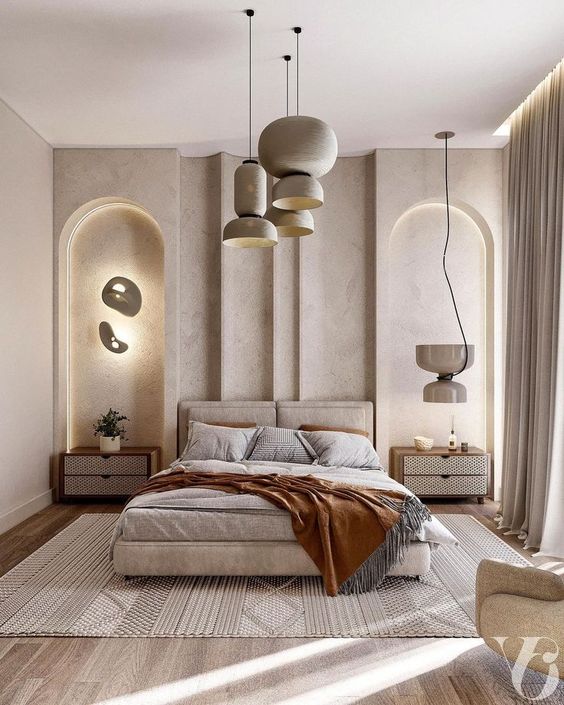
Source: covethouse.eu
7.Easy Maintenance:
Neutrals are forgiving when it comes to hiding dirt and wear and tear. Lighter neutral colors, in particular, can help conceal minor imperfections and make maintenance easier. From choosing stain-resistant fabrics and washable paints to opting for durable furniture and simplified decor, each element contributes to a cohesive design philosophy centered on both aesthetic charm and practical convenience.
8.Creating a Cohesive Look
Using a neutral color scheme throughout different areas of a home or office can help create a cohesive and unified look. This sense of continuity contributes to the overall flow and harmony of the space. The use of neutral tones in interiors, such as whites, beiges, grays, and soft muted hues, lays the foundation for a serene and adaptable aesthetic. Neutrals offer a blank canvas, inviting an array of design possibilities that cater to individual tastes and preferences.
9.Flexibility in Design Styles
Neutrals can adapt to various design styles, whether it’s a minimalist, traditional, modern, or eclectic aesthetic. This adaptability makes neutrals suitable for a wide range of design preferences. Neutrals, encompassing a spectrum from whites and grays to soft earthy tones, serve as the versatile backbone of a space, allowing for a myriad of design expressions. The true magic lies in their ability to adapt, creating an environment that is not only visually appealing but also effortlessly flexible.
The different neutral shades used in interior design
Get Free Design
Neutral shades in interior design encompass a wide range of colors that are subtle, understated, and often serve as a backdrop for other more vibrant or focal elements in a space. Here are some popular neutral shades commonly used in interior design:
1.White:
- A classic neutral, white is clean, fresh, and can make a space feel larger and more open. It’s a popular choice for walls, trim, and furniture.
- White reflects light, making rooms appear more spacious and airy. This is particularly beneficial in smaller or darker spaces where white can contribute to a feeling of openness.
- White is a classic color that transcends trends. Its timeless quality ensures that a white interior remains fresh and relevant over time.
- White serves as a neutral backdrop, allowing for easy integration with various styles and color schemes. It can be paired with bold accent colors for a striking contrast or combined with other neutrals for a serene monochromatic look.
- White can help regulate temperatures in warmer climates by reflecting sunlight and preventing rooms from overheating. This can contribute to a cooler and more comfortable living environment.
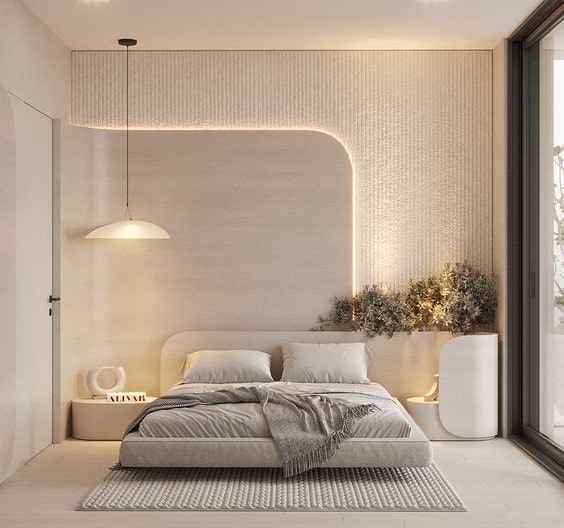
Source: behance
2.Beige:
- Beige is a warm neutral that comes in various tones, from light to dark. It adds a sense of warmth and is often used in living rooms, bedrooms, and other spaces where a cozy atmosphere is desired.
- Beige tones evoke a sense of warmth and comfort, making them particularly well-suited for living rooms, bedrooms, and cozy spaces. The color creates a welcoming and inviting atmosphere.
- Beige is a highly versatile neutral that pairs well with a wide range of colors. It serves as a neutral canvas, allowing for the integration of different accent hues and patterns without overpowering the overall design.
- Like white, beige is a timeless and enduring color. It has a classic appeal that withstands changing design trends, providing a long-lasting and elegant foundation for interiors.
- Beige complements natural materials such as wood, stone, and plants. This connection to nature can create a harmonious and balanced design.
- Beige can balance out bold or vibrant elements in a room. If you have colorful furniture or statement pieces, using beige as a backdrop can prevent the space from feeling overwhelming.
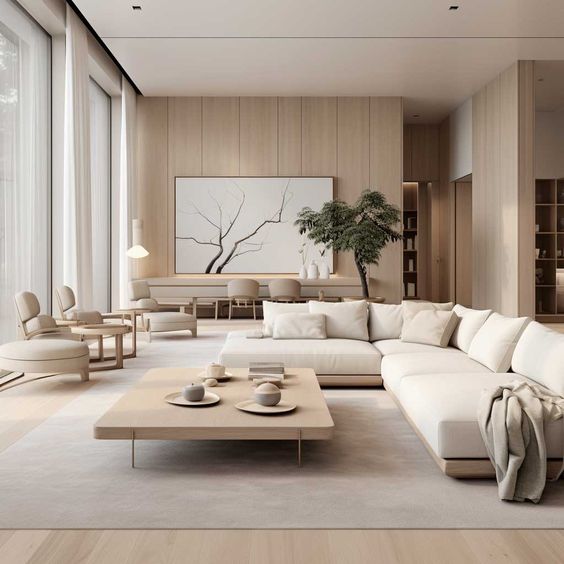
Source: behance
3.Gray:
- Gray is a versatile neutral that comes in a wide range of shades, from light and cool to dark and warm. It can create a modern and sophisticated look and pairs well with various accent colors.
- Gray serves as an excellent neutral backdrop for other colors to pop. It allows vibrant accents or contrasting elements to stand out, creating a dynamic and visually appealing space.
- Gray comes in a spectrum of shades, from light and airy to deep and dramatic. This versatility allows for the creation of diverse atmospheres within a space, depending on the chosen shade.
- Lighter shades of gray can enhance natural light in a room, making it feel brighter and more spacious. This makes gray a suitable choice for spaces with limited access to sunlight.
- Gray interiors can benefit from the introduction of various textures and materials. From plush fabrics to sleek metals, layering different textures adds depth and visual interest to a gray space.
- Lighter shades of gray contribute to a serene and calming atmosphere. This makes gray a suitable choice for bedrooms, bathrooms, and other relaxation-oriented spaces.
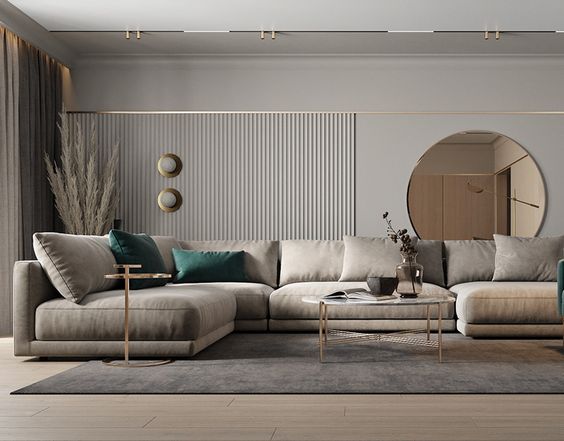
Source: behance
4.Taupe:
- Taupe is a neutral color that falls somewhere between brown and gray. It’s a popular choice for creating a serene and sophisticated atmosphere.
- Taupe exudes a timeless and classic elegance, making it a versatile choice for a variety of design aesthetics, from traditional to contemporary.
- Taupe serves as an excellent neutral foundation that can be paired with a wide range of colors. It provides a warm and welcoming backdrop for other elements in the space.
- Taupe is an excellent color for showcasing texture. Different materials and finishes, such as linen, wood, and stone, can be layered to add depth and interest to the space.
- Taupe works well in transitional spaces like hallways and entryways. It provides a neutral and elegant transition between different areas of the home.
- Taupe can be incorporated into modern interiors, adding a sense of warmth and sophistication to sleek and minimalist designs.
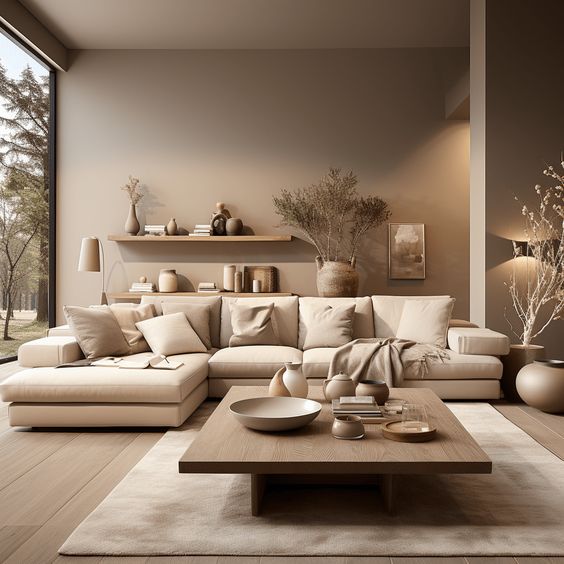
Source: bleu-canard.fr
5.Cream:
- Cream is a warm and inviting neutral that adds a touch of softness to a space. It works well as a wall color, especially in rooms where a subdued and calming ambiance is desired.
- Cream exudes timeless elegance, making it a classic choice for creating sophisticated interiors. Its neutrality allows for longevity in design without succumbing to trends.
- Cream’s gentle tone creates a soft and calming atmosphere, making it well-suited for bedrooms, living rooms, and areas where relaxation is a priority.
- Cream reflects light effectively, contributing to brighter and airier spaces. This quality is particularly advantageous in rooms with limited natural light.
- Cream can be used in monochromatic color schemes, creating a harmonious and sophisticated look. Layering different shades of cream adds depth and interest without being overpowering.
- Cream can be used to accentuate architectural details, such as moldings, trim, and built-in features. It adds a touch of elegance to the overall design.
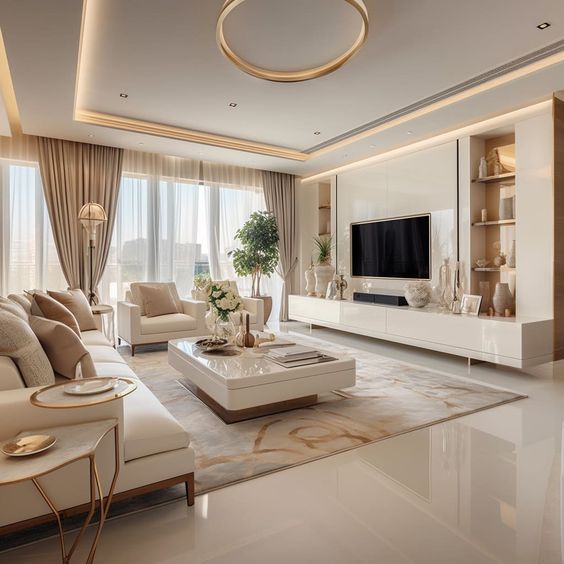
Source: fancyhouse-design.com
6.Charcoal:
- Charcoal gray or dark gray is a deep neutral that can add drama and sophistication to a space. It’s often used for accent walls, furniture, or as a backdrop for vibrant artwork.
- Charcoal is an excellent choice for creating dramatic accent walls. It adds depth and focal interest to a room without overwhelming the space.
- Charcoal can be used as a contrasting color in combination with lighter tones such as whites, creams, or pastels. This creates a striking visual impact and adds dimension to the overall design.
- Charcoal can be used as a contrasting color in combination with lighter tones such as whites, creams, or pastels. This creates a striking visual impact and adds dimension to the overall design.
- Incorporating charcoal-colored furniture pieces, such as cabinets, coffee tables, or dressers, can serve as statement pieces in a room. They become focal points against lighter surroundings.
- Charcoal can create a cozy and intimate atmosphere in bedrooms, especially when used for bedding, accent walls, or furniture. It adds a sense of warmth and comfort.
- Charcoal-colored textiles, such as curtains, rugs, or throw pillows, can introduce a sense of luxury and texture to the space. They also provide a visually pleasing contrast against lighter backgrounds.
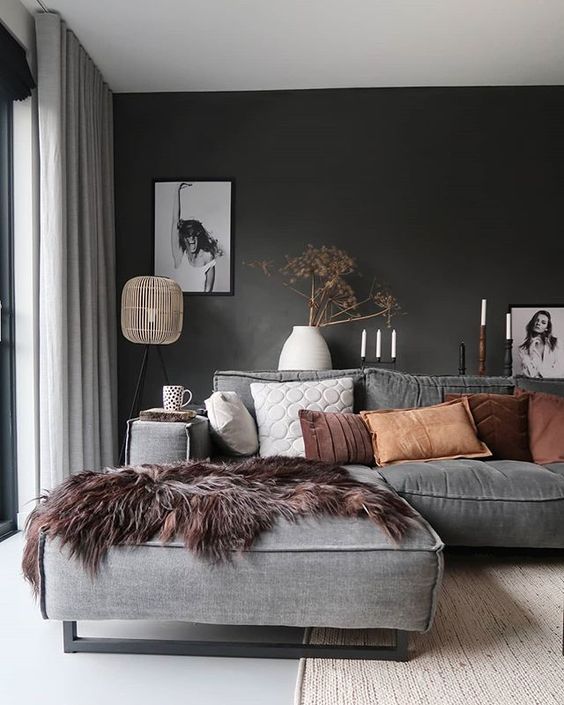
Source: littlebluedeerdesign.com
7.Greige:
- A combination of gray and beige, greige is a popular neutral that offers the best of both worlds. It’s versatile, modern, and complements a variety of design styles. This hybrid color offers a warm and sophisticated alternative to more traditional neutrals.
- Greige’s warm undertones create a welcoming and inviting atmosphere. It adds a touch of coziness to spaces like living rooms, bedrooms, and dining areas.
- Greige pairs well with a wide range of colors. It harmonizes with both warm and cool tones, allowing for flexibility in color schemes and decor choices.
- Greige is often used in bathrooms for a serene and spa-like atmosphere. It pairs well with white fixtures and natural materials, creating a balanced and calming space.
- Greige can be used for subtle accent walls, adding depth without creating too much contrast. It allows other elements in the room to stand out while providing visual interest.
- Greige is well-suited for transitional spaces like hallways and entryways. It serves as a neutral transition between different rooms.
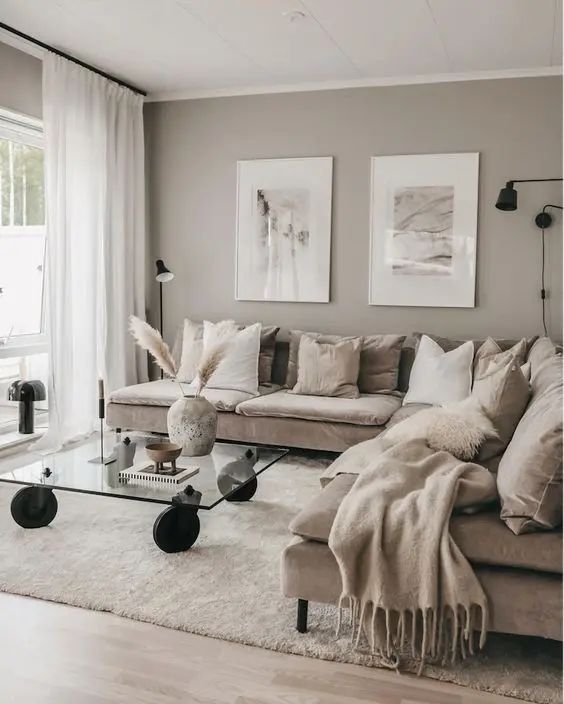
Source: google.com
8.Ivory:
- Ivory is a warm and slightly yellowish neutral that adds a touch of elegance. It works well in traditional and classic design schemes.
- Ivory exudes timeless elegance, offering a classic and refined aesthetic that doesn’t go out of style. It creates a sense of sophistication and understated luxury.
- Ivory reflects light effectively, contributing to a light and airy atmosphere. It’s especially beneficial in spaces with limited natural light, making rooms feel brighter and more open.
- Ivory upholstery for sofas, chairs, and curtains adds a touch of grace and timelessness to a room. It provides a neutral foundation that allows other elements to shine.
- Ivory is a popular choice for bedroom designs, creating a serene and elegant atmosphere. It pairs well with various accent colors and textures for a cohesive look.
- Ivory complements natural materials like wood, creating a harmonious and warm aesthetic. It can be used in combination with wooden furniture, flooring, or accents.
- Ivory pairs well with metallic accents, such as gold, silver, or brass. The combination of ivory and metallics adds a touch of glamour and sophistication.
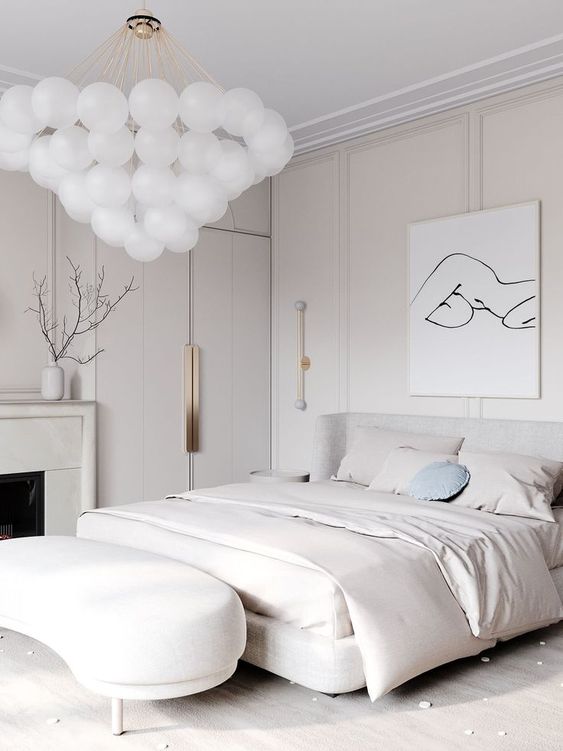
Source: veranda.com
9.Navy:
- While navy is a darker color, it can function as a neutral when used in moderation. It pairs well with lighter neutrals and adds depth to a color scheme.
- Navy works well as an accent color for feature walls, creating a focal point in a room. It adds drama and depth without overwhelming the space.
- Navy is often associated with nautical and coastal themes. It can be used in conjunction with white and red accents to create a classic maritime-inspired look.
- Navy-colored furniture, such as sofas or accent chairs, adds a sense of luxury and sophistication to a living room. It creates a timeless and refined look.
- Navy can be paired with neutral tones such as white, beige, or gray to create a balanced and harmonious color scheme. This combination allows for versatility in decor choices.
- Navy kitchen cabinets create a bold and stylish statement. When paired with contrasting countertops and backsplashes, navy adds a contemporary touch to the kitchen.
- Navy creates a strong contrast when paired with lighter tones. It can be used for trim, moldings, or doors to add visual interest and definition.

Source: behance.net
10.Soft Blues and Greens:
- Soft shades of blue and green can also be considered neutral, especially when they have muted undertones. These colors can evoke a sense of calm and are often used in coastal or nature-inspired designs.
- Soft blues and greens are ideal for creating a calm and relaxing bedroom environment. Use these colors for bedding, curtains, or wall paint to establish a serene retreat.
- Soft blues and greens are commonly associated with coastal and beachy themes. Incorporate these colors in furniture, decor, and accessories to evoke a coastal ambiance.
- Soft greens mimic the colors of nature, creating a harmonious and organic feel. Use these tones in spaces where a connection to the outdoors is desired.
- Soft blues and greens in bathrooms can evoke a spa-like atmosphere. Consider using these colors for tiles, shower curtains, or accent decor to create a refreshing space.
- Introduce soft blues and greens through furnishings such as sofas, chairs, and cushions. These colors can add a subtle touch of color and create a cohesive look.
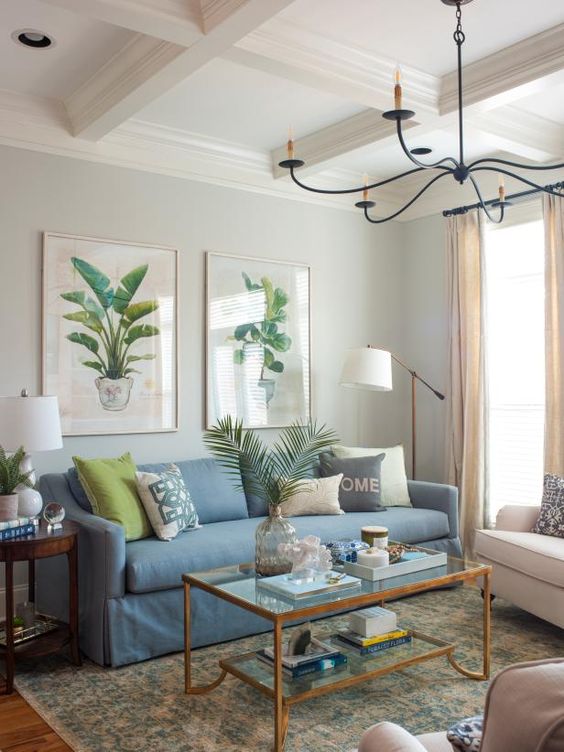
Source: photos.hgtv.com
Ways in which neutral shades can be used in interior design
Neutral shades can be used in a variety of ways in interior design to create a cohesive, timeless, and versatile aesthetic. Here are some ways in which neutral shades can be effectively incorporated into interior design:
1.Wall Colors:
Neutral shades make excellent choices for wall colors. Lighter neutrals, such as whites and creams, can make a space feel brighter and more open, while darker neutrals, like grays and charcoals, can add depth and sophistication. They are a popular choice in interior design for their versatility, timelessness, and ability to create a backdrop that complements various design styles. When choosing a neutral wall color, consider the lighting conditions in the room, the overall color scheme you want to achieve, and the mood you intend to create.
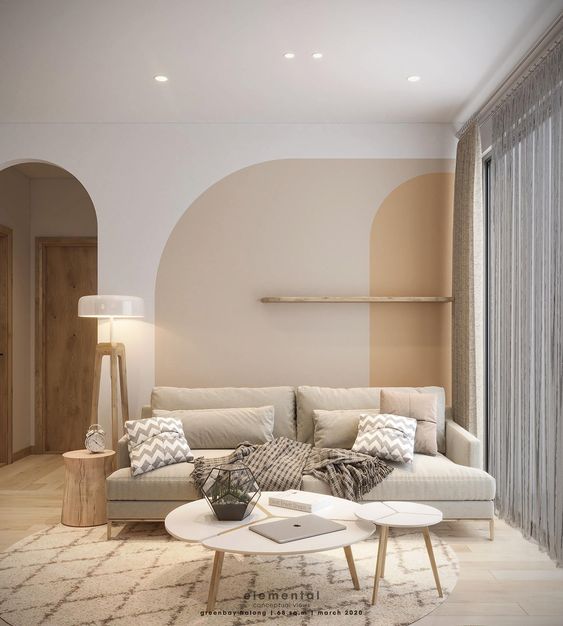
Source: colourbenhance
2.Large Furniture Pieces:
Use neutral colors for larger furniture pieces, such as sofas, sectionals, and dining tables. This provides a neutral foundation and allows for more flexibility when introducing accent colors through smaller decor items. Choosing large furniture pieces in neutral shades provides a timeless and versatile foundation for your interior design. Neutral colors create a sense of balance and flexibility, allowing you to easily change decor elements without the need to replace major furniture items.
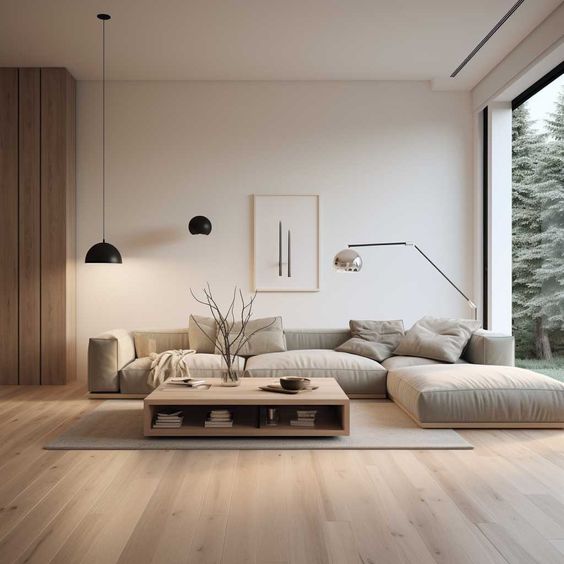
Source: artfasad
3.Flooring:
Neutral-colored flooring, such as light-toned hardwood or neutral carpets, can serve as a neutral backdrop for the rest of the room. This is especially useful in creating a sense of continuity between different areas of an open floor plan. Neutral flooring is a contemporary and elegant choice. It pairs well with a variety of decor styles and allows for easy coordination with different color schemes.

Source: lulandgeorgia
4.Curtains and Drapes:
Neutral-colored curtains or drapes contribute to a cohesive look in a room. They can be used to frame windows and add texture without overwhelming the space with bold colors. Choosing curtains and drapes in neutral shades is a versatile and timeless approach to window treatments. Neutral colors create a subtle backdrop, allowing other elements in the room to shine while providing a cohesive and sophisticated look.
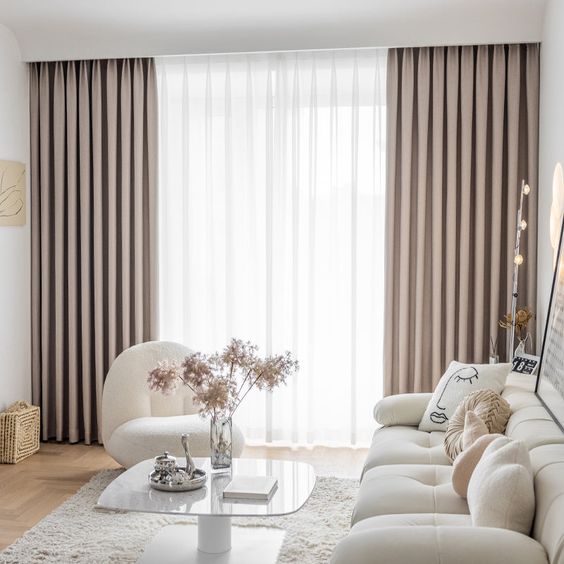
Source: luneehome.com
5.Accessories and Decor:
Decorative items like throw pillows, rugs, artwork, and vases in neutral shades can tie a room together and provide a sense of unity. These items can easily be swapped out or updated to refresh the look of a space. Choosing accessories and decor in neutral shades is a sophisticated and versatile way to enhance your interior design. Neutral tones provide a timeless backdrop, allowing you to experiment with various textures, patterns, and styles without overwhelming the space.
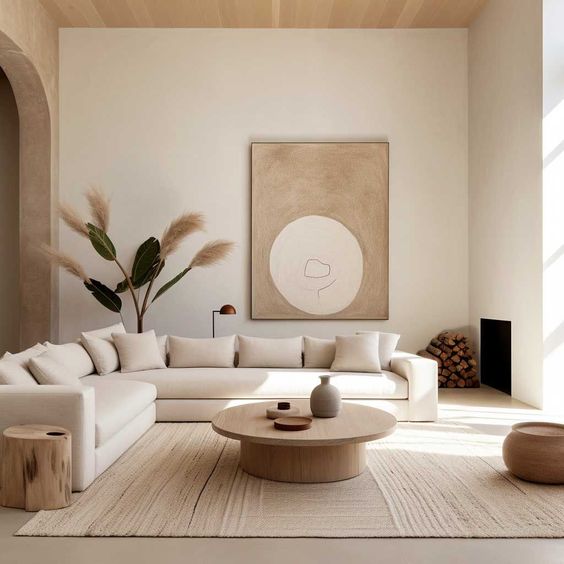
Source: youtube.com
6.Accent Furniture:
While larger furniture pieces are often in neutral tones, smaller accent furniture, such as side tables or accent chairs, can be chosen in neutral shades to balance the overall color palette. Accent furniture in neutral shades serves as a stylish and versatile addition to your interior design, providing a foundation that complements various color palettes and styles.
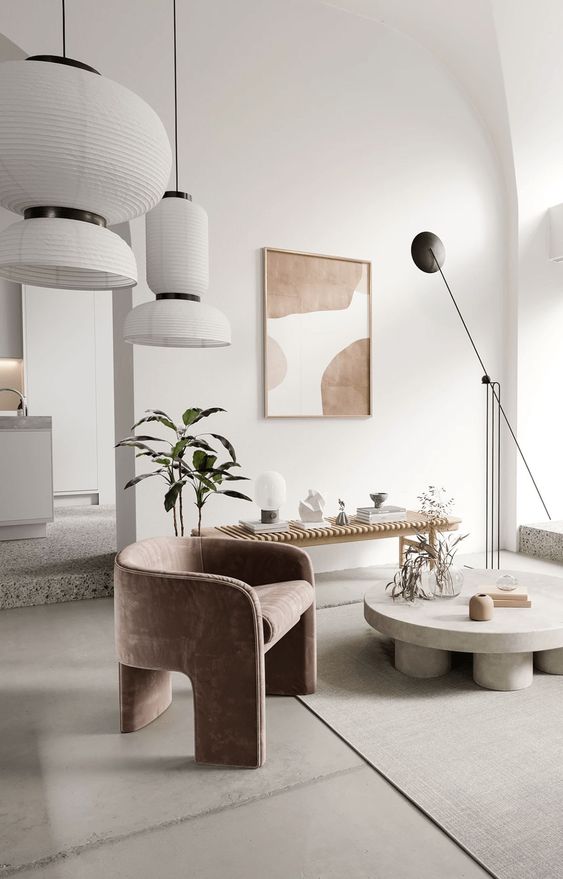
Source: casavogue.globo.com
7.Textiles:
Incorporate neutral textiles, such as bedding, cushions, and upholstery, to add texture and warmth to the space. Neutral textiles are easy to layer and can be complemented with bolder patterns or colors as desired. They add warmth, texture, and versatility to the space. Neutral textiles provide a timeless backdrop that allows for easy adaptation to changing styles and color schemes.
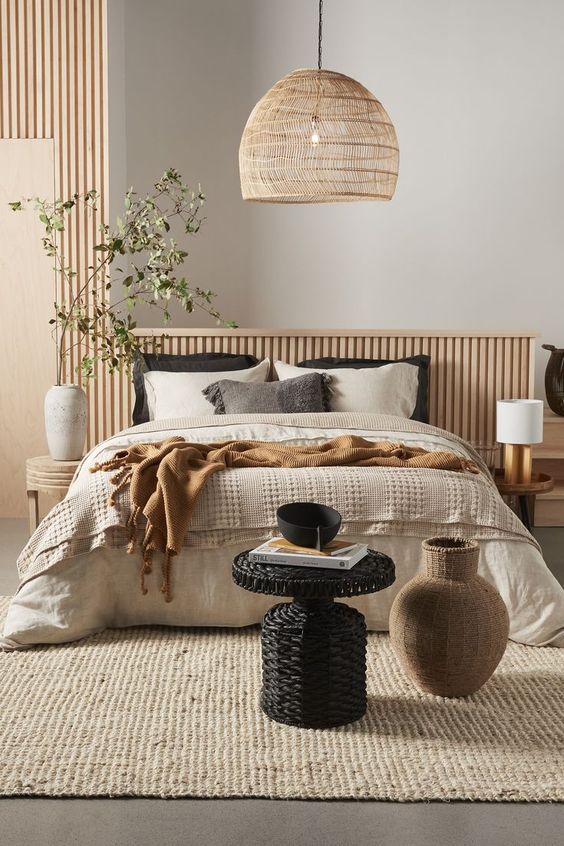
Source: hiendaccents.com
8.Cabinetry and Built-Ins:
Neutral shades are commonly used for cabinetry and built-in furniture. This is particularly popular in kitchens and bathrooms, where neutral colors create a timeless and sophisticated look. Incorporating cabinetry and built-ins in neutral shades is a timeless and versatile approach that allows for flexibility in interior design. Neutral tones provide a clean and sophisticated backdrop, allowing other elements in the room to stand out.
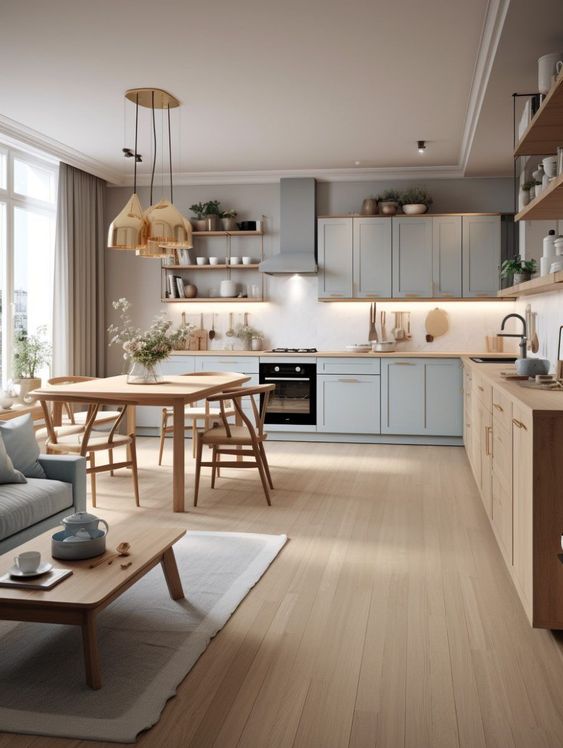
Source: nymphsworkshop.com
9.Trim and Molding:
White or off-white trim and molding can provide a clean and classic finish to a room. It helps define architectural elements and complements neutral wall colors. Trim and molding in neutral shades can enhance the overall aesthetic of a space, providing a subtle yet impactful way to frame and highlight architectural features. Neutral tones for trim and molding create a timeless and versatile backdrop, allowing for flexibility in decorating styles.
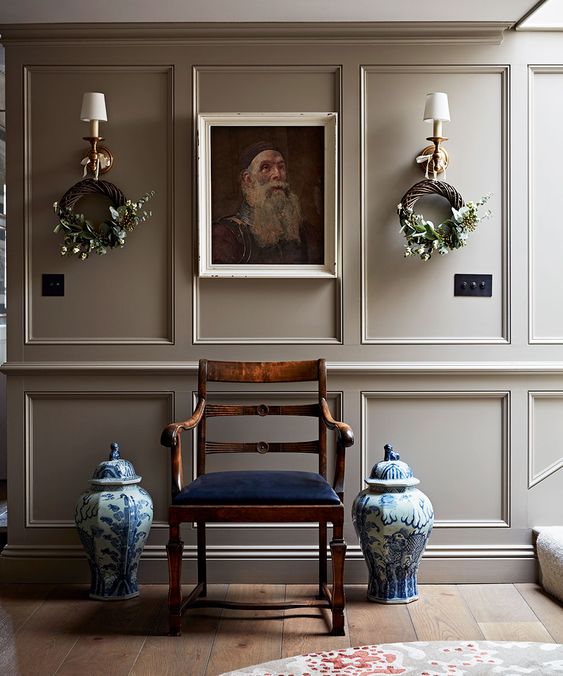
Source: homesandgardens.com
10.Light Fixtures:
Neutral-toned light fixtures, such as white or metallic finishes, can blend seamlessly with the overall design while adding a touch of elegance or modernity. Light shades in neutral tones contribute to a bright and airy atmosphere, creating a versatile backdrop for various design styles. Neutral light fixtures can seamlessly blend into different color palettes and decor themes, offering flexibility in interior design.
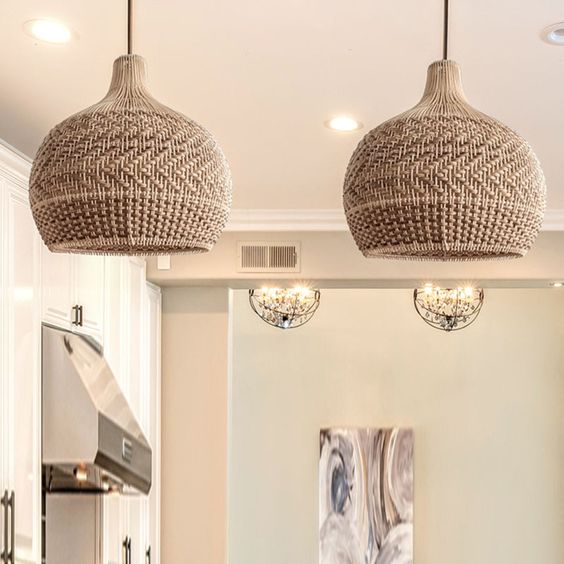
Source: labpiecesign.com
11.Monochromatic Color Schemes:
Embrace a monochromatic color scheme by using different shades of the same neutral color. This creates a sophisticated and harmonious look without introducing a wide range of colors. This color scheme involves using variations of a single color (in this case, neutral tones) to create a harmonious and cohesive look in interior design. Neutral shades are particularly well-suited for monochromatic schemes, as they offer a timeless and sophisticated aesthetic.
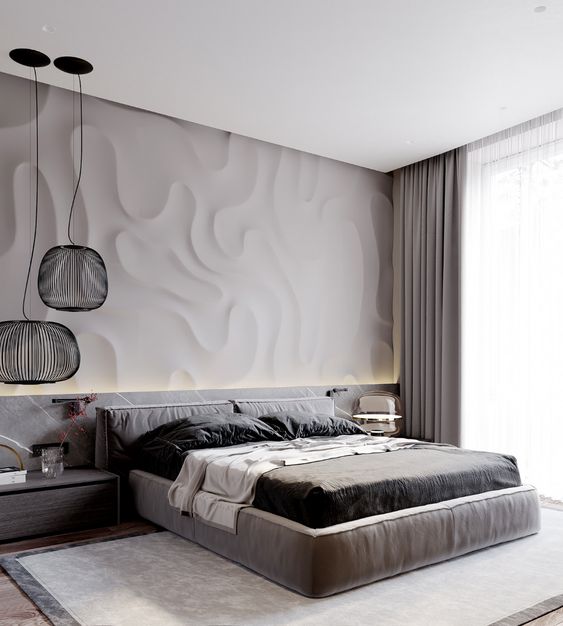
Source: behance.net
12.Neutral Backdrops for Art:
Neutral walls and furniture can serve as a neutral backdrop for artwork. This allows the artwork to become a focal point and adds personality to the space. Neutral backdrops for art provide a versatile and timeless foundation that allows the artwork to take center stage. Neutral colors create a harmonious and balanced setting, allowing the colors, textures, and forms of the art pieces to shine.
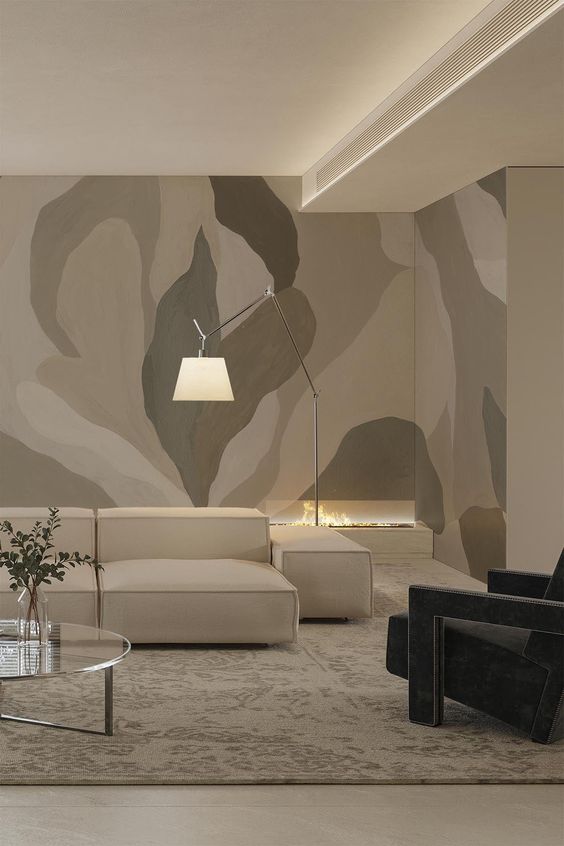
Source: belartestudio.com
Conclusion
The use of neutrals in design offers a timeless, sophisticated, and flexible approach that allows for personalization and adaptation over time. Whether as a foundation or as accent elements, neutrals play a crucial role in creating aesthetically pleasing and functional designs. By strategically incorporating neutral shades in these various elements, you can create a cohesive, balanced, and inviting interior design that provides a versatile canvas for personalization and future updates.
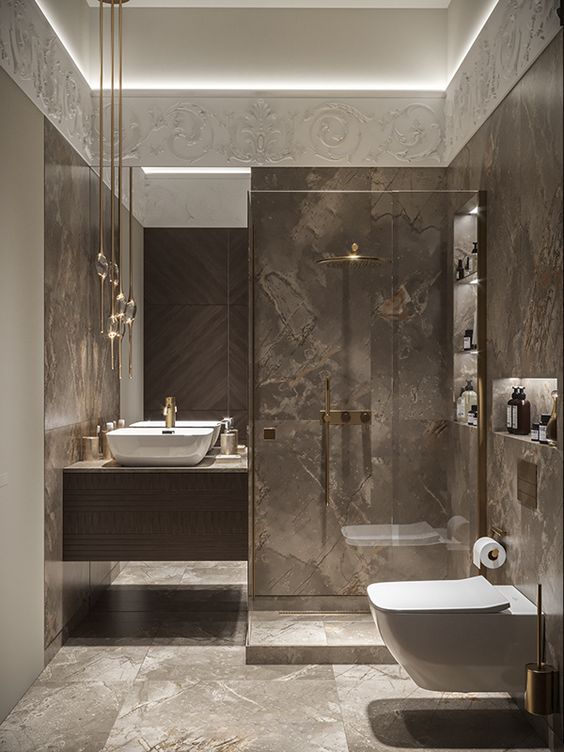

About Author ankitha kelkar
You May Also Like…
The Ultimate Guide to Small Modular Kitchen Designs in 2024
A brief overview of Small Modular Kitchen DesignThe space...
Top 10 TV Unit Designs to Enhance Your Home Interiors
Television unit designs have changed in response to changing...

